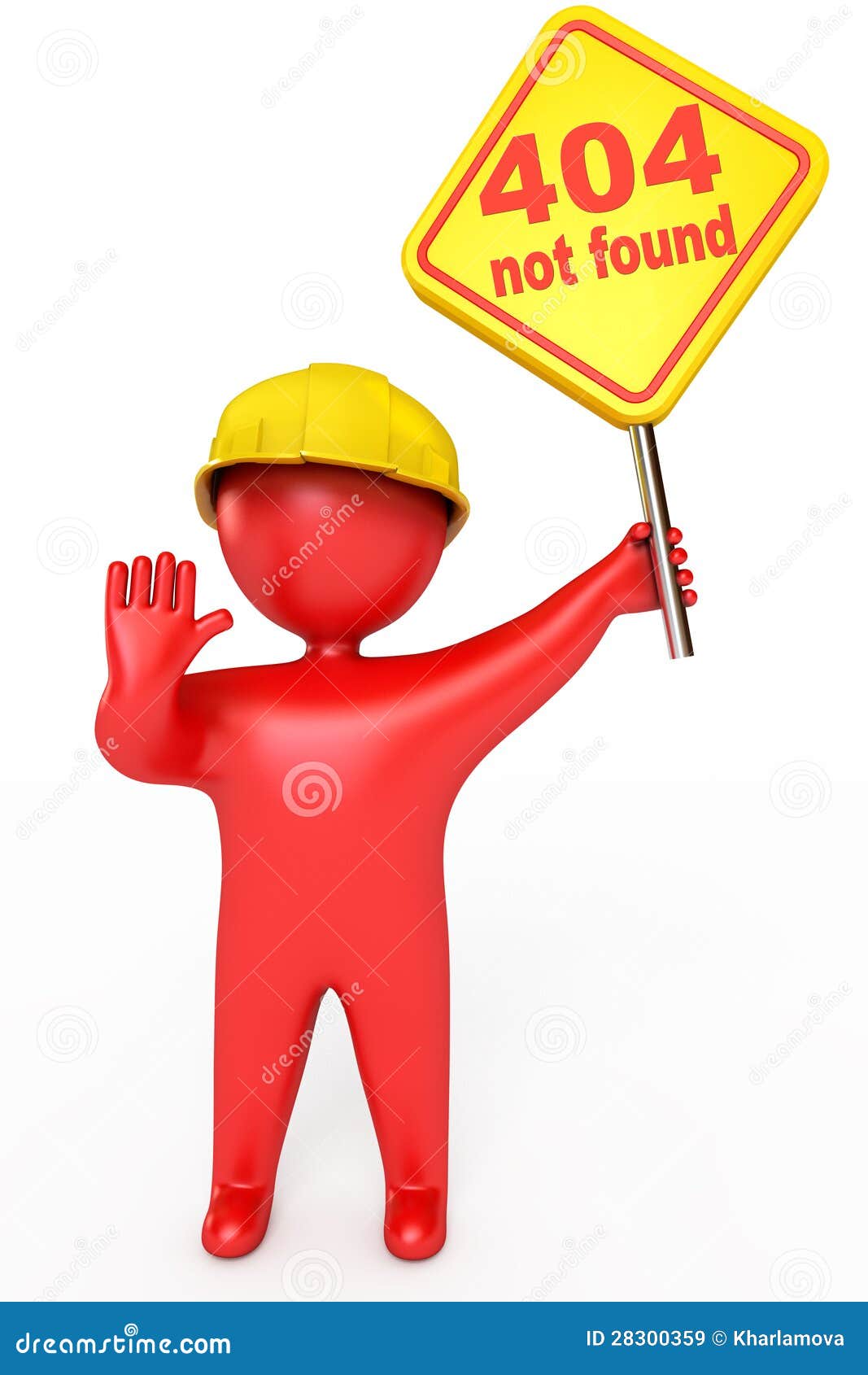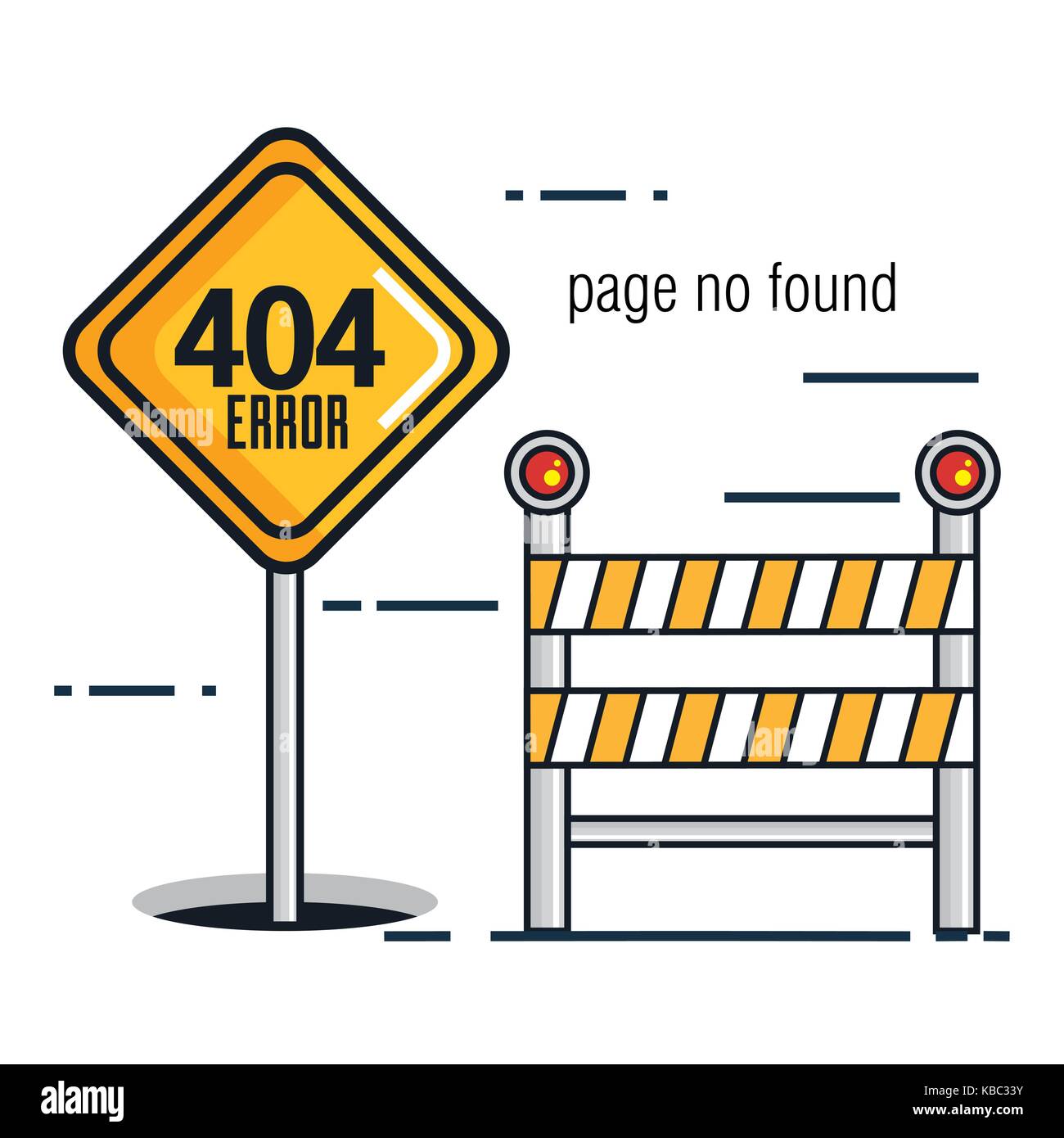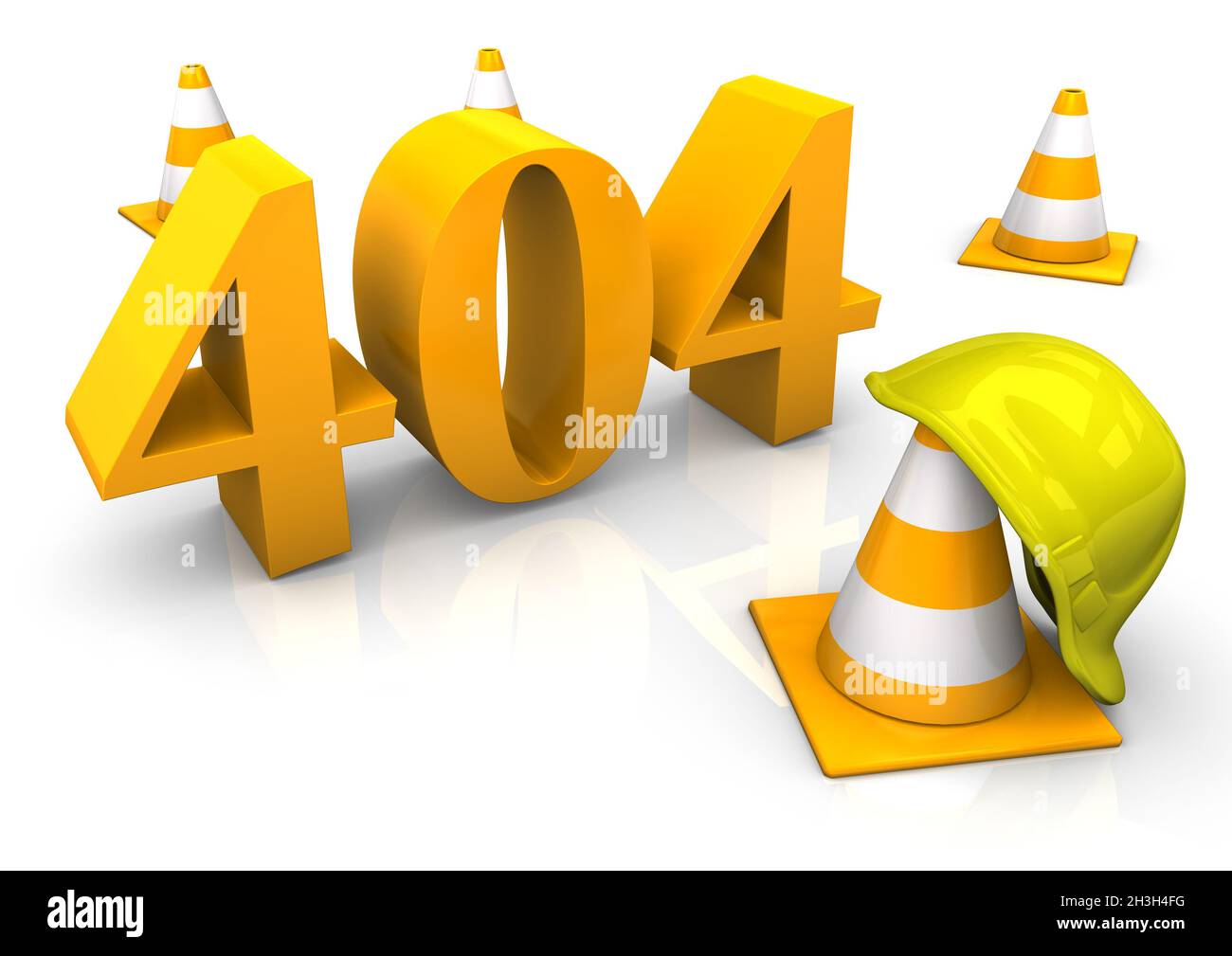Imagine, if you will, that you're just looking for something online, maybe a recipe, a news article, or perhaps some information you really need. You type in an address, or click a link, and then... nothing. Or, rather, not the something you were hoping for. Instead, a rather stark message pops up, a little digital dead end that says, "404 Not Found." It's a moment, really, when your online journey comes to a sudden, unexpected halt, leaving you just a little bit stranded in the vastness of the internet.
This little message, the one that tells you a page is simply not there, is quite common. It's a signal from the web's systems, a way for your computer to say, "Hey, I asked for this specific spot, but the place I asked doesn't seem to have it." It's not necessarily a problem with your computer, or even the internet itself, but more like a miscommunication about a specific web address. You might be wondering, "Why does this happen, and what can I do about it?" Well, it's actually something that happens for a few different reasons, and thankfully, there are often some pretty straightforward things you can try to get back on track.
Understanding these little web hiccups, like the "404 stop time" we're talking about, can make your time online much smoother. It helps you know what's going on behind the scenes when a page doesn't show up, and more importantly, it gives you the tools to try and fix it yourself. So, let's chat a bit about what this message truly means, why it appears, and some simple steps you can take to get past that unexpected pause.
- Filmyzillacom Bollywood Hollywood Hindi Dubbed Movies Filmyzilla
- Spider Man Download In Hindi Filmyzilla
- Apharan Season 2 Download In Filmyzilla Mp4moviez
- Filmyzilla Com Hollywood Movies
- Jurassic World Filmyzilla
Table of Contents
- What's the Deal with a Missing Web Page?
- Why Does My Screen Say "404 Not Found"?
- How Does a "404 Stop Time" Happen?
- Can You Really Fix a "404 Stop Time" So Easily?
- Little Tricks for a "404 Stop Time" Moment
- What Happens When a "404 Stop Time" Shows Up?
- What's a "404 Stop Time" Signal?
- Keeping Your Site Smooth - Avoiding "404 Stop Time"
What's the Deal with a Missing Web Page?
When you're browsing the internet and suddenly encounter that "404 Not Found" message, it can feel a little bit like hitting a wall. What it means, in the most straightforward way, is that the particular web page you were hoping to see simply isn't where your computer thought it would be. It's a bit like asking for a book at a library, only to be told that specific book isn't on the shelf, or perhaps it was moved to a different section entirely. The server, which is the big computer holding all the web pages, is telling your browser, which is the program you use to look at websites, that it couldn't locate the exact item you requested. This little communication, or lack thereof, results in what we call a "404 stop time" for your browsing. It's not a catastrophic failure of the internet, just a specific page being absent from its expected spot.
This situation, where a page seems to have vanished, can be a bit frustrating, especially if you were really counting on seeing that content. You might have clicked a link from another site, or maybe you typed in the address yourself, and yet, the desired content just isn't appearing. It's a common experience for anyone who spends a fair amount of time online. The web is a constantly shifting place, and sometimes, things just don't line up perfectly. So, when you see that "404," think of it as a polite digital shrug from the server, indicating that it searched for what you asked for but came up empty-handed.
Why Does My Screen Say "404 Not Found"?
You might be sitting there, looking at a screen that just says "404 Not Found," and wondering why this particular "404 stop time" is happening to you. There are a few common reasons for this message to pop up. One very frequent cause is a simple typo in the web address. It's surprisingly easy to accidentally hit an extra letter, miss a dash, or misplace a dot when typing out a web address. Even a tiny mistake can lead your browser to look for a page that doesn't exist at that exact, incorrect location. So, if you typed it in, giving it a quick double-check is often a good first step.
- Kushi Movie Hindi Dubbed Download Filmyzilla
- Cook Up A Storm Full Movie In Hindi Download 720p
- Bhag Milkha Bhag
- Avatar Full Movie In Hindi Download Filmyzilla 720p
- Filmyzilacom Hindi Movie
Another reason a page might seem to vanish is that it's been moved. Websites are often updated, and sometimes, content gets reorganized. A page that was once at one address might now be at a completely different one, or it might have been combined with other information. If the website owners didn't set up a proper redirect, your old link or remembered address will lead you to a dead end. Similarly, content can simply be taken down or deleted. If a product is no longer sold, or an old article is no longer relevant, a website might choose to remove that page entirely. In these cases, your request for that specific piece of information results in the server telling you it's just not there anymore, causing that "404 stop time."
How Does a "404 Stop Time" Happen?
A "404 stop time" really happens when your computer, which is acting as a client, asks a web server for a specific piece of content, like a particular web page. Think of it like this: your browser sends a little note to the server, saying, "Hey, can I please have the page at this address?" The server then looks through its files and directories to find that exact page. If it finds it, great! It sends the page back to your browser, and you see what you wanted. But if the server searches and comes up empty, if that specific address doesn't lead to any content it recognizes, then it sends back a special message. This message is called a "status code," and the one for "not found" is 404. So, basically, the server is just letting your browser know, "Sorry, I looked, but that one isn't here."
This communication is a standard part of how the web works, actually. It's part of a set of rules called the Hypertext Transfer Protocol, or HTTP for short. These rules dictate how computers talk to each other over the internet. When you get a 404, it's a specific kind of HTTP response. It means the server understood your request, it just couldn't fulfill it because the resource you asked for couldn't be located. It's not that the server is broken, or that your internet connection is down; it's a very specific kind of message about the absence of a particular item at a particular address. This is why that "404 stop time" can feel so sudden – it's an immediate, direct response to a request that couldn't be completed.
Can You Really Fix a "404 Stop Time" So Easily?
When you hit a "404 stop time," it can feel a bit like you're stuck, but often, the solutions are surprisingly simple. For users, there are some very quick and easy things you can try before giving up on finding that information. The first thing many people try, and it often works, is to simply refresh the window. Sometimes, it's just a temporary glitch, or maybe the page was just about to load but got interrupted. A quick refresh sends the request again, and sometimes, that's all it takes for the page to appear as it should. It's a bit like giving your browser a gentle nudge.
Another very common and often effective approach is to double-check the web address. If you typed it in yourself, look for any spelling mistakes, extra characters, or missing bits. Even if you clicked a link, it's possible the link itself had a tiny error. A careful look at the address bar can sometimes reveal the problem right away. If you notice a small mistake, correcting it and trying again can make that "404 stop time" vanish instantly. These simple actions are the first line of defense against those frustrating "page not found" messages, and it's quite amazing how often they do the trick.
Little Tricks for a "404 Stop Time" Moment
Beyond just refreshing the page or checking the address, there are a few other little tricks you can try when you encounter a "404 stop time." One very useful thing is to clear your browser's cache. Your browser stores temporary files from websites you visit to help them load faster next time. Sometimes, though, this stored information can become outdated or corrupted, causing issues like a 404 error even if the page is actually there. Clearing the cache basically tells your browser to get fresh copies of everything from the website, which can often resolve the issue. It's a bit like giving your browser a clean slate for that particular site.
If you're pretty sure the page should exist, but it's just not showing up, you might try going back to the website's main home page and trying to find the content from there. Websites often have search bars or clear navigation menus. If a page has been moved, or its address changed, you might be able to locate it by starting from the main site and looking through their sections or using their internal search tool. This is especially helpful if you were trying to reach a specific article or product on a site you visit often. So, rather than giving up, a little bit of exploration on the site itself can often help you overcome that "404 stop time" and find what you were looking for.
What Happens When a "404 Stop Time" Shows Up?
When a "404 stop time" shows up, it means your browser, instead of showing you the content you wanted, is displaying an error message. This message typically says "404 Not Found," or something very similar, indicating that the specific web page you were looking for couldn't be located on the server. For you, the person looking at the screen, it means a sudden interruption in your browsing. You wanted to see something specific, and now you're faced with a message telling you it's just not there. This can be a bit of a letdown, especially if the content was important to you.
From the perspective of a website owner, or even a search engine trying to figure out what's on the internet, a 404 error is a signal that something is amiss. It means that a user, or a search engine's automated crawler, tried to get to a page that doesn't exist at that address. For users, it's a moment of frustration, perhaps causing them to leave your site. For search engines, too it's almost a sign that a part of your website might be broken or gone, which can sometimes affect how well your site shows up in search results. So, while it seems like a simple message, it carries quite a bit of weight for both the person trying to find information and the people providing it.
What's a "404 Stop Time" Signal?
At its core, a "404 stop time" is really just a status code. It's a small piece of information that the web server sends back to your browser. Think of it like a little note from the server, letting your browser know the outcome of its request. In this case, the 404 code is a specific signal that tells the web user that the page they asked for isn't available at that moment, at that particular address. These status codes are part of the very basic language that computers use to talk to each other on the internet, especially when they're using the Hypertext Transfer Protocol.
There are many different kinds of these response status codes, each indicating a different situation. For example, a 200 code means everything is okay and the page was found. But the 404 is specifically for when the server understands the request but just can't find the requested resource. It's a way for the server to communicate, in a very precise manner, that the item you're looking for is simply not there. So, when you see that "404," you're actually seeing a direct message from the server, a clear signal about the status of the page you tried to access, which naturally leads to a "404 stop time" in your browsing.
Keeping Your Site Smooth - Avoiding "404 Stop Time"
For anyone who runs a website, preventing "404 stop time" moments for visitors is pretty important. When people try to reach a page on your site and hit a "not found" message, it can be a bit of a negative experience. They might get frustrated and leave, possibly not coming back. This is why understanding what a 404 error is, and why it might show up on your website, is a valuable piece of knowledge for site owners. It's about making sure your visitors have a smooth and enjoyable time while they're with you.
Being aware of how these errors affect user experiences and even how search engines view your site can help you keep things running well. If you move a page, for instance, setting up a proper redirect can make sure that anyone with an old link still gets to the right place, avoiding that "404 stop time." Similarly, regularly checking for broken links on your own site can catch these issues before your visitors do. Taking these simple steps helps ensure that your site remains a welcoming place, where content is easy to find, and unexpected pauses are kept to a bare minimum.
So, whether you're just browsing or you're managing a website, knowing a little bit about what a "404 stop time" means can really make a difference. It's a message that a page isn't there, perhaps because of a typo, a page move, or content that's been taken down. For users, simple fixes like refreshing the page, checking the address, or clearing the browser's temporary files can often resolve the issue. For website owners, understanding this status code helps in keeping their online presence tidy and user-friendly, ensuring that visitors find what they're looking for without hitting unexpected dead ends. It's all about making the online experience just a little bit smoother for everyone involved.
Related Resources:



Detail Author:
- Name : Darrick Kiehn
- Username : ratke.willie
- Email : jbreitenberg@yahoo.com
- Birthdate : 1971-02-07
- Address : 8205 Kenyon Dam Apt. 705 Lake Danielle, CA 99498
- Phone : (251) 753-1664
- Company : Bernier Group
- Job : Dishwasher
- Bio : Ratione in et molestiae provident. Est et eos et quae ratione.
Socials
linkedin:
- url : https://linkedin.com/in/esta_official
- username : esta_official
- bio : Voluptatem quis rerum nihil enim.
- followers : 5747
- following : 2339
twitter:
- url : https://twitter.com/stehre
- username : stehre
- bio : Qui distinctio aut a veritatis magnam ut. Nihil neque doloribus non ea. Ut autem labore et temporibus aliquam. Dolorem laudantium consequuntur corporis id.
- followers : 4726
- following : 1816
instagram:
- url : https://instagram.com/esta_id
- username : esta_id
- bio : Voluptatem recusandae qui nisi unde voluptatum. Aut sed cum eius minima libero officiis ipsam.
- followers : 4744
- following : 2793
tiktok:
- url : https://tiktok.com/@esta.stehr
- username : esta.stehr
- bio : Ea amet ullam est in non. Ut error ipsam est dolore.
- followers : 6195
- following : 1107
facebook:
- url : https://facebook.com/estastehr
- username : estastehr
- bio : Nostrum dicta recusandae vitae quisquam veniam voluptas.
- followers : 3592
- following : 2253